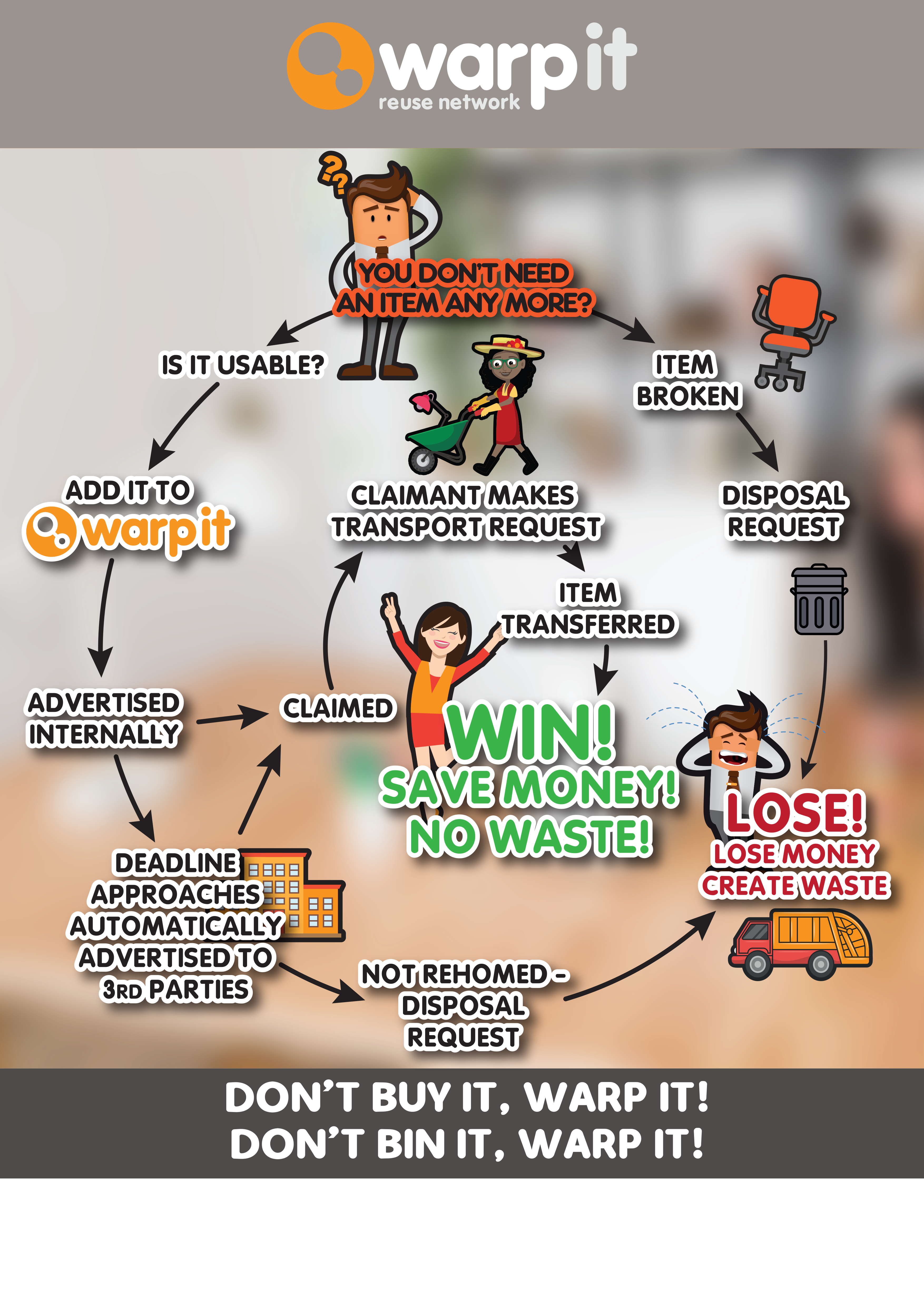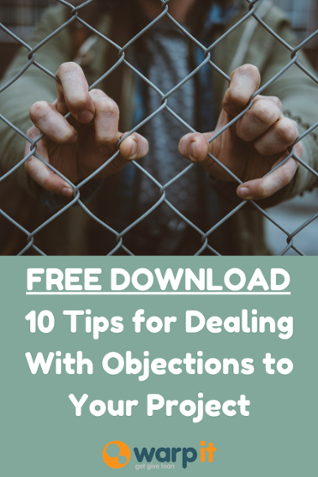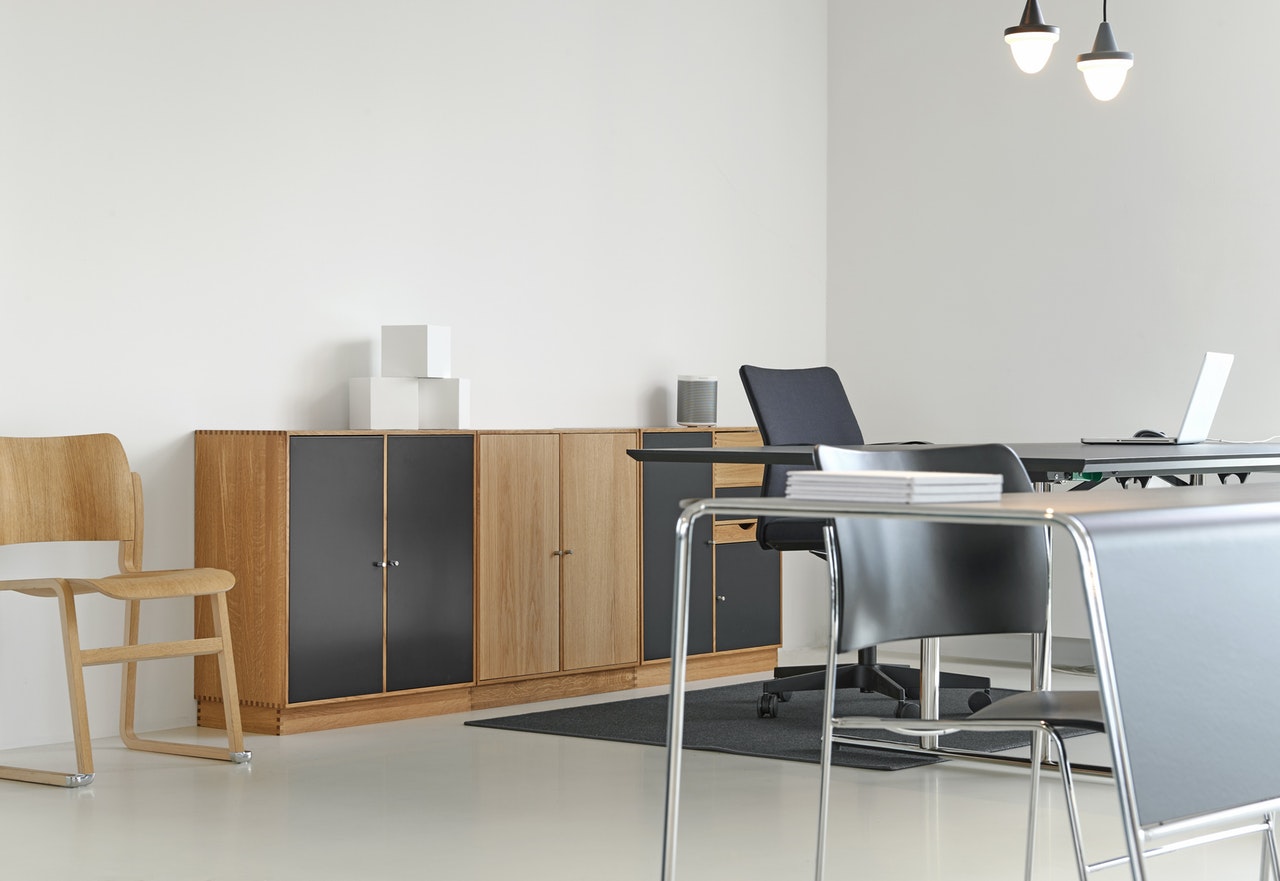We welcome Daniel O’Connor to the podium to tell his story...
If you are a frequent reader of the Warp It Blog, you will know that Daniel is the proud founder of Warp It, a man who has dedicated his adult life to resource efficiency and ending the curse of wastefulness. This mantra has led him through a very interesting journey, which he has shared below.
This story is being retold in the hope of giving others a way forward if they are problem solvers, change makers and/ or seeking to be an entrepreneur.
The early days
In the early 2000's, I was working in waste management. That is, I used to manage the facilities where organisations would dispose of lots, and lots, and lots of waste, and within that waste were lots of perfectly useful items. They were reusable - other people would still want them, but, because of time and space pressures, those items were being sent to landfill rather than being sent to other people who could use them.
The benefits of reuse were clear to me. In the first instance, you avoid waste, but a much greater impact than that is that if you can send a reused item to somebody else who was instead going to buy a new item, what that means is you're stopping the manufacture and transport of that new item. The main environmental impact of an item is when it's being manufactured, the environmental impact of actually making goods is massive when actually compared to them becoming waste.
Furthermore- there are people out there who really want your item because they have nothing! So the charitable opportunity was a great motivator.
Top Tip:
If somebody is wasting time and money on their current process then you know it needs to be improved.
Horrified by what I saw
What I saw on a massive scale in those waste facilities was thousands of chairs, thousands of desks, thousands of computers, thousands of microwaves, thousands of everything you can care to think of, being thrown away.
I was so familiar with the problem. I could see the problem every day and the solution was obvious, ‘how can I create a communication mechanism so that organisations can talk to each other about surplus assets’.
I wanted to make sure that we could find homes for those things before the date that they needed to be thrown out.
What that meant for me was approaching some software developers and presenting to them the problem that I'd seen every day. The solution was very obvious - eBay was already quite big in the early 2000s, and I was an active user on eBay after I left university.
I used to buy and sell camper vans on eBay, and I did that as a job really for a couple of years. Every week I'd buy and sell a camper van and make a little bit of money. I knew the eBay model quite intimately so I knew I could apply something similar to large organisations.
Top Tip:
When you are close the the problem and know it intimately, you are much more likely to come up with a solution that works. If you are not close the the problem then you need to define and specify the problem as well as you can in order to understand it. This means talking to stakeholders.
Experience, idea, action
I had no money! I went around all the banks and did not get anything. I then went in for competitors and through this route I secured £7K which was enough to build a version of what i wanted to create but with no frills bells or whistles.
Top Tip:
This is called the MVP or Minimal Viable Product in the start up world. This reduces risk and allows you to get feedback from customers to iterate the product.
I knew I had to start small and then prove the service to others using that experience.
A good pal of mine told me a local council were restructuring and would be perfect for the system.
Luckily they were right at the start of the process so they could actually feed into the development of the product so it fitted their needs.
Top Tip:
At the start even if you have no product you can approach your target market and develop the system with their help. They can even fund the development if you pitch it right,
I started with just one organisation, Sunderland City Council. I got them on board and they saw really good results, so we invited their partners in the city on board, such as the healthcare service, and the university. I realised,
‘Right, Daniel, you can build this on an organisation by organisation model, but those organisations can then link up with each other, and we can build a citywide model’.
We took this idea, and we built a marketplace, so that staff within an organisation could swap and trade surplus assets with each other. We also made it so that organisations could also send friend requests to other organisations in the city, so that there's then a citywide network, and then those organisations in the city could send friend requests region-wide, so there's a region-wide marketplace too.
Top Tip:
I did not leave my existing job until I had proved the model would be commercially viable. I validated the idea and proved that it would give me a sustainable income.
Validate your idea by consulting with others. I wrote something about this here. This reduces the likelihood that you waste time and money.
 Four tiers of reuse
Four tiers of reuse
What we've created is a secondhand goods marketplace that works within the organisation, then citywide, then region-wide, and also nationally. In the UK there are now thousands of organisations who all have their own internal eBay-style marketplaces to swap and trade surplus assets. Those organisations then link up on a city, region, or national basis, and continue to trade surplus assets, and the impact is that we stopped people buying new stuff that other members in the network already have. This has massive sustainability benefits, and allows partners to stop scrapping their items.
How can you repeat this model?
1) You have a unique exposure in your current role. There are wastes of time and money in most processes.
2) When you find a problem, define the problem as much as you can. Keep asking why. Ask stakeholders.
3) Consult with everyone about your idea.
4) Test your idea with peers and / or potential customers.
5) Prove the model while you are still in work
I did a video about this process here.
Daniel's journey wasn't easy, along the way we learned how to deal with objectors.
He's shared those tips in the free download below.









